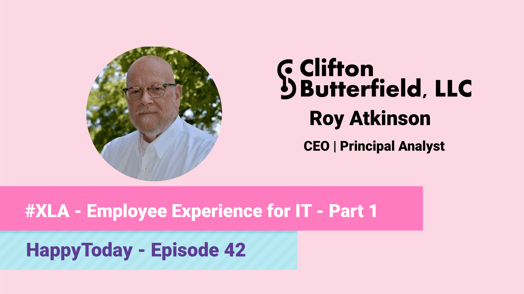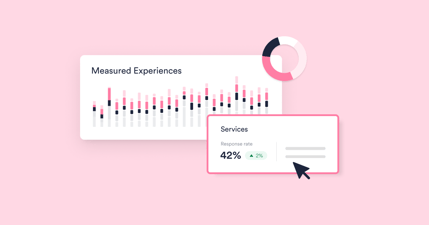Defining Employee Experience
Roy defines employee experience as being parallel to the definition of customer experience - the overall experience of a customer at every touchpoint with an organisation. Of course, from an employee perspective this differs from a customer experience, focusing more on how an employee experiences different events (such as recruitment / onboarding process) to how they experience daily working activities, business tools, processes and business services.
However, Roy claims the biggest idea we need to be focusing on when discussing experience is the end-users feelings towards something.
Furthermore, Employee Experience is not to be confused with Employee Engagement, as they are two different things. Employee Engagement's focus is on how well the employee fits with the goals and values of the organisation, and whether they are able to contribute to the success of their team.
Employee Experience from all perspectives
Perspective is a key word here, as there will be many different perspectives of employee experience, and not just from the employees themselves. Take a large organisation as an example, there may be many different levels of people aiming to address employee's experience.
For example, the COO who is in charge of the overall employee experience (10,000 people), then the IT director whose in charge of employee experience relating to IT (1,000 people) and maybe even a lower level team manager who is in charge of his/her teams experience (10 people).
As you can see, especially in large organisations, there can be many different perspectives of employee experience. This is why the need for feedback is highly important to make sure everyones voice is being heard, and not just from who can shout the loudest.
Employee Experience from IT's perspective
Following suit from above, employee experience from IT's perspective have many different touch points as well, with many different angles to look from.
For example, there is the perspective from IT and from the Service Desk team - are they able to do their jobs properly, do their end-users appreciate their service, do they access to the right tools to carry out their jobs?
Experiences also go deeper than this, how well do teams operate with each other? Are there specific teams that feel isolated from the large whole of the IT department? Are different IT teams working in tandem with each other, or does one team not consult the other before making a decision?
Furthermore, as we know, a lot of focus goes to end-users of IT's experiences. Therefore, how does IT provide its services to it's end-users. Does IT integrate with the rest of the organisation? What is the perceived perception of IT amongst end-users?
There are so many different standpoints and perspectives that can shape an organisations overall employee experience.
This not only highlights the need for continuous measurement and feedback, as well as also brightly highlighting, in bold and underlined, the need for experience management.
Tech is one of the biggest drivers in todays age, and is the base line driving force of keeping your employees working. Therefore it is incredibly important for your end-users to get the right service at the right time, as well as the proper support, when needed.
How can an organisation benefit from Employee Experience?
The effects of employee experience comes out in different and unexpected ways. A recent Gallup study of over 3 million respondents, shows that organisations with a positive employee experience have high work place happiness, with more people wanting to turn up to work each day as they feel good about their job.
Gallup also found that there was a 41% improvement from the top quartile and the bottom quartile of quality defects. This shows that people are actually creating better products due to a greater experience and feeling more engaged in their job.
Not only this, but Gallup found a 66% increase in employee wellbeing from having a good work experience.
The final statistic that is worth mentioning, and of course saving the best till last, is that Gallup's study reported that organisations in the top quartile vs organisations in the bottom quartile, had a 23% increase in profitability.
If you weren't convinced before, I bet you will be now!




